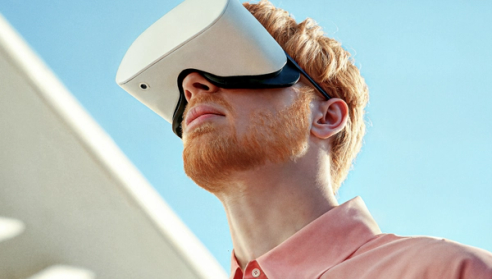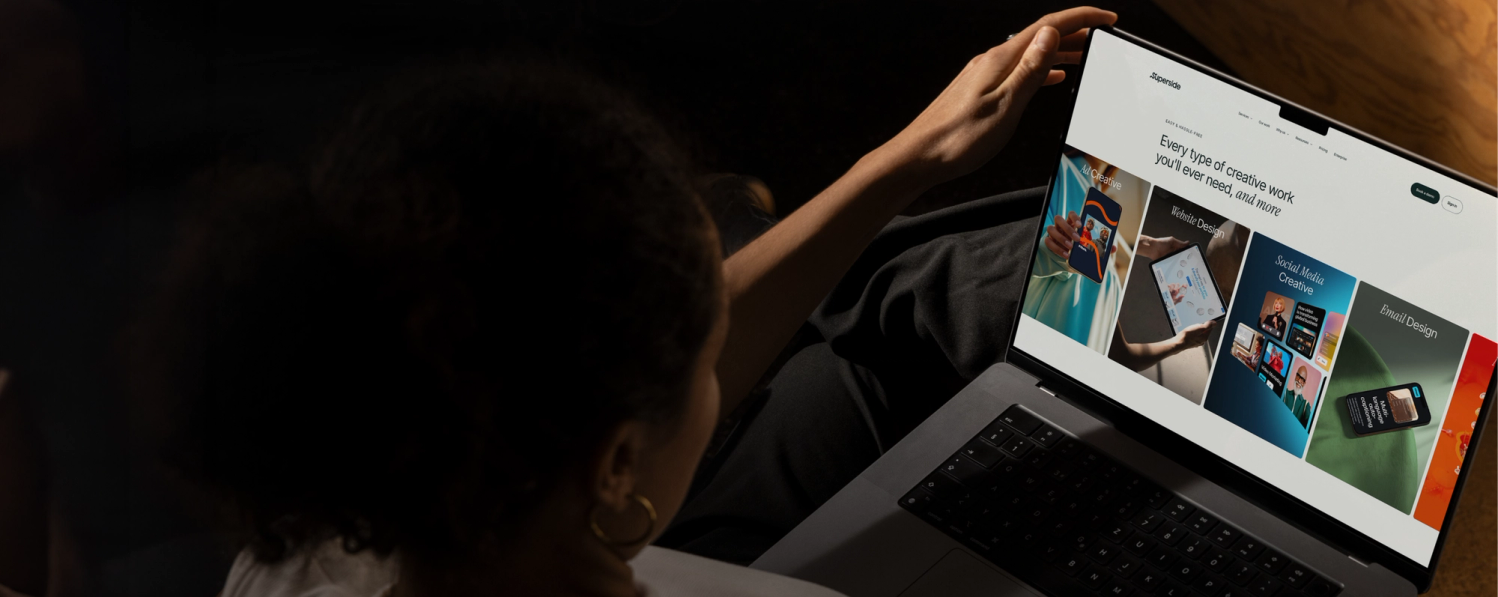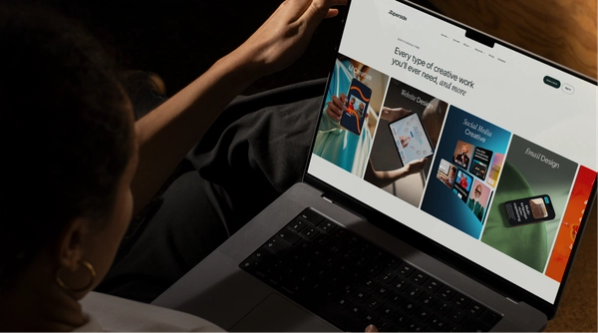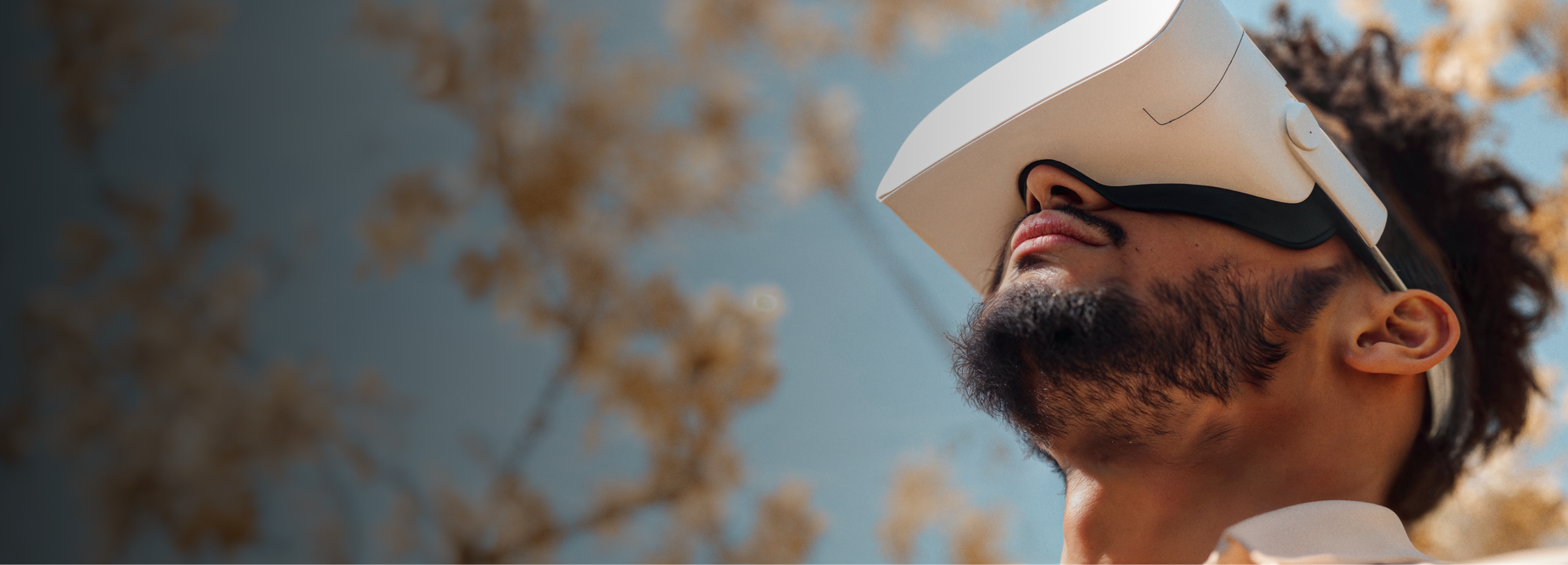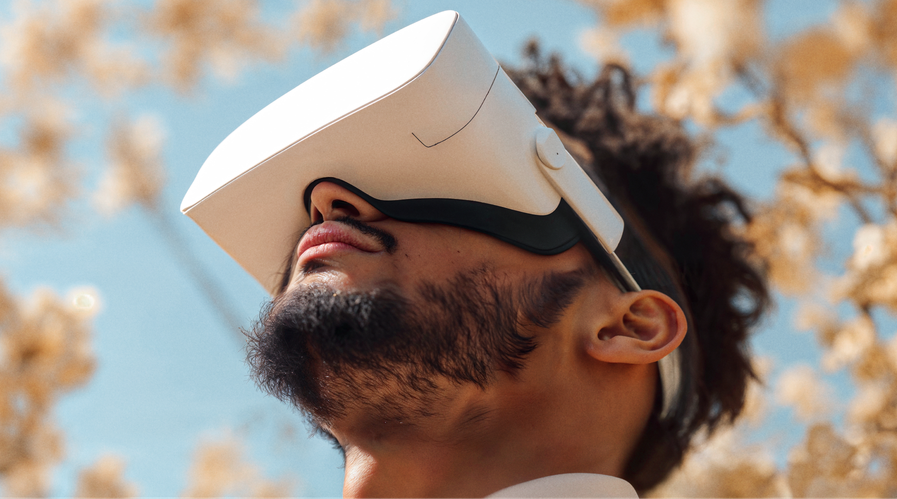
10 Augmented Reality (AR) Examples That Made Marketing Look Good
Published 30 Nov, 2023
Marketing campaigns that combine augmented reality (AR) and business-as-usual (BAU) tactics consistently outperform BAU-only ones. In this article, I examine several instances of AR being used to aid marketing's goals—often to great effect. In each case, AR technology bridged important gaps for prospects, while also distinguishing the brand from competitors.
Brands that combine traditional marketing with augmented reality (AR) just do better. In one meta-analysis, 90% of brands found campaigns combining business as usual and AR enjoyed nearly three times the brand lift, and cost an average of 59% less.
AR is going the way of AI tools like ChatGPT and Midjourney—it’s here to stay, and marketing and creative leaders who use AR leave a stronger impact on prospects than those who use traditional marketing tactics alone. All of these businesses have since leveled up their brand, taking their marketing from a question of engagement to one of experience.
From interactive conference rooms to fashion retailers’ “virtual catwalks,” I’ll walk you through some of the best augmented reality examples in B2B and B2C. I’ll also show you how you can use AR in your own marketing campaigns.
Why AR Matters
Augmented reality has transcended its novelty phase. If we’re learning anything from the tech takeover of the past few years, it’s that marketing can no longer be confined to traditional mediums. Every space is now a potential storytelling platform (user discretion permitting), making the most memorable brands the ones with the best brand experiences.
The ratio of noise-to-value favors noise. Punctuating that noise for a prospect depends on shaking things up, and it’s something traditional marketing tools like static ads can’t do alone. During one installment in our Creative Chat series, How To Create Dynamic Brand Experiences With AR, José Teixeira, Creative Director, 3D & Motion Design at Superside, said AR is helping brands compete in a space where most marketing is no longer "static" anyway.
Nowadays, everything is either 3D, or motion, or video. It's no longer just illustration and photographs.

Making AR part of the design and marketing strategy is how brands ensure that wherever they meet their prospect—be it a virtually-enhanced conference presence or a selfie filter for your phone or tablet—prospects are compelled to remember the interaction that made them feel different.
Hear more from Teixeira and his creative colleagues on the difference AR can make in marketing in this chat:
10 AR Examples
Contrary to popular belief, augmented reality is accessible to businesses of all sizes. Here’s what a wide range of B2B and B2C businesses are doing with AR, and how it’s helping them maximize their impact.
1. IKEA: Place Tool (B2B & B2C)
IKEA’s AR room planner, IKEA Place, allows customers to “try out” digital versions of the Swedish furniture in whatever real world space they choose. Once they’ve chosen an item, they point their phone or tablet at the space in question, and use their fingers to move it into the desired position. From there, the filter generates a near-perfect model of the item in the area.
While its most obvious use is in the B2C space (customers hoping to spruce up their home), it’s also found substantial use among businesses looking to furnish offices and other work spaces. IKEA Place quickly became one of the most popular apps of its kind, with nearly 8.5 million downloads.
Giving customers and decision makers at businesses a true-to-life look at how (and if) the product will fit within their chosen space doesn’t just help IKEA’s sales teams. The use of AR supports marketing by shortening the journey towards a purchase, and removing potential barriers to said purchase along the way. It also strengthens the prospect’s impression of the brand: A normally static experience becomes a brand asset that encourages active participation with the products.
The tool's also helped reduce product returns by 20%, and the company says it's increased online sales by 35% since its inception. IKEA’s use of AR even answers questions that normal marketing can’t answer: “How do I know this will work in my office or home?”
2. Ceridian Dayforce: AR Convention Stand (B2B)
Work-tech giant Ceridian Dayforce are enjoying the distinction AR provides in a different setting—they partnered with Superside to enhance the brand’s presence during conventions. Using an augmented reality filter, attendees could view teasers of the suite of solutions offered by the employee management platform.
Pairing their in-person convention stands with an augmented reality component helps the human capital management leader stand out in the hypercompetitive tech space. AR is especially engaging in a convention environment, where high-power decision makers are flooded with options for solutions.
3. StubHub: Super Bowl Seating Plan (B2C)
Approaching the Super Bowl, ticketeer StubHub introduced an augmented reality feature that allowed prospective ticket buyers to see virtual models of their potential seat at the U.S. Bank Stadium, while showing them nearby parking structures and concession areas. Consumers could visualize their full experience before purchasing, minimizing the risk of paying for a crummy seat.
This increase in buyer confidence didn't just help consumers. AR’s ability to showcase the seats and—by necessity—push prospects towards better seats made it a fine marketing tool for higher-priced purchases.
In our Creative Chat, Phil Maggs, Creative Director New Horizons, said any ad that heightens sensory stimulation is more likely to convert.
An ad that has any integration of interaction will just perform better. It'll cost you less to get the results you want from it.

4. Superside: Standout Summit Game (B2B)
We wouldn’t toot our own horn here unless it was noteworthy. And to the tune of 1M impressions, 2M views and a use-time average of 41 seconds per session, the AR game we used to drive awareness for our recent Standout Summit is just that. The Instagram AR lens we built allowed our users to determine which session at an upcoming Superside event would be the most interesting for them via a simple tilt of the head.
Keeping the engagement quick, light and mildly interactive, word of our event spread much faster and further than if we'd relied on standard marketing alone. The webinar's over now, but you can still give it a shot here—maybe you'll even find out which of the recorded sessions would appeal most to you.
5. Malibu: Tropical Parkour (B2C)
The popular liqueur company created an AR game as part of their “A Bit of Sunshine” summer campaign. Malibu’s Tropical Parkour game used Snapchat’s AR Marker Tech to transform billboards, product packaging and select buildings into animations and games when scanned by users’ devices.
When looking at specific surfaces, users were prompted to play a sidescroller game, where they avoided collision with tropical objects and gathered power-ups. Especially on bus stops (where most ads were found), embarking on a short game made waiting for the bus much less tedious, if not a little fun. In this way, Malibu used AR to create a brand experience that left a stronger impression on prospects than most conventional marketing tactics.
What’s more, they used the technology to put an unusual spin on their out-of-home campaign—one that capitalized on the context of each space (i.e. people waiting/eager for distraction).
6. AEI Consultants: Sponsored Break Room (B2B)
AEI, a growing leader in the environmental tech space, wanted to create an innovative and fun AR experience for a high-value conference in Las Vegas. Knowing the importance of conference breaks, they plastered their sponsored break room with card-based prompts to enjoy an AR experience; each experience positing a potential “future” when working with them.
Scanning each card transformed the images into a striking fusion of 2D and 3D animated wonders that unfolded like a pop-up book on the attendee’s device. The striking imagery and unearthly nature of the experience distinguished the brand to attendees, while drawing attention to their construction and environmental services.
7. OnePlus: Nord Launch (B2C)
What better way to debut a shiny new must-have consumer tech item than (virtually) giving it out, examining its sleek design, pixel-perfect interface and wealth of features in extreme detail? Consumer electronics provider OnePlus demonstrated their new phone via a virtual/AR product launch that had the phone hovering gracefully on each attendee’s device’s display.
Following what may as well be a cardinal rule for B2C, OnePlus’ AR product launch answered any question a buyer might have about the product. More than 100,000 users watched the live-stream, excited to learn about the product through a new medium. OnePlus’ use of AR allowed them to reach a wider audience through sheer ingenuity, while also casting the product and brand in a highly flattering light.
8. Karol G: Augmented Avatar (B2C)
Music is a business like any other, and Karol G’s marketing team knows what it takes to stand out. Ahead of the influential reggaeton and latin trap artist’s newest album, her team opted for a surface-tracking WebAR filter that makes the singer “appear” on whatever surface the phone or tablet is pointing at, dancing among a mix of 3D text and hearts.
Karol G’s dancing avatar is a simple, but critical touch in the marketing campaign for the new album. By presenting a physical, interactive experience in an arena where the experience is usually only auditory, Karol G’s AR marketing stands out to prospective listeners by giving them a more dimensionalized and stimulating activity.
In the Creative Chat, Maggs noted the rising demand for "connective" brand content; especially considering competition with users' non-branded content, in which they're regularly steeped.
The deeper connection that you can form through interaction will only become more necessary.

9. Coca Cola: In-Store Visualizer (B2B)
“But how will it look?” asked a retail manager. “See for yourself,” answered Coca Cola.
While that specific interaction almost surely did not happen, soft drink leader Coca-Cola used augmented reality to solve a common problem for its B2B marketing and sales departments: visualizing how and if beverage coolers would fit in stores.
The beverage industry leader learned how to market themselves to buyers long ago, and AR is the newest tool in their box. Seeing a still catalog or website full of cooler options is one thing for a business; seeing how a fully stocked display fits at the end of aisle six is another. For Coca Cola, augmented reality removes barriers, and further cements the brand’s reputation as one committed to convenience.
10. Amazon: Virtual Try-On [B2C]
If it’s not clear by now, augmented reality is the single best answer to the question “how will it look?” Amazon has no shortage of consumer empathy, and have used their tech to eliminate this barrier entirely by letting prospects “try on” select shoes when assessing the product.
Like IKEA’s Place tool, it supports the brand’s goals by answering questions normal, static marketing can’t. AR also leaves the impression of a cutting-edge experience; a forward thinking brand that cares about limiting consumer friction.
How AR Boosts Marketing Performance
AR is here to stay for marketers and creatives, and it’s redrawing the lines of consumer interaction. No longer passive observers, your prospects are now active participants in the brand narrative. Through interactive AR experiences, prospects touch, feel, and engage with products in ways that deepen their connection to your brand, making them far more likely to consider your solution.
As marketers and designers, we’re moving from one-dimensional communication to multi-sensory storytelling. We’re painting a bigger and better picture of what we can do for our audiences, and these AR advertising and marketing examples are just a small sample of what’s being created by brands and augmented reality design agencies.
Whether you’re a team of pros or just getting started, our creative experts can help you move forward with AR as an invaluable tool in your kit.
David is a Senior Content Marketer at Superside. A former journalist with bylines too numerous to enumerate, he brings his love of storytelling and semantics to the marketing world. Recognizing the sizable gaps in the creative-as-a-service (CaaS) sector, he jumped at the chance to fill the creative void for ambitious brands. In his off hours, he enjoys loud music, making vegan meals and being made fun of for making vegan meals. He’ll gladly talk to you about any of the above on LinkedIn.






